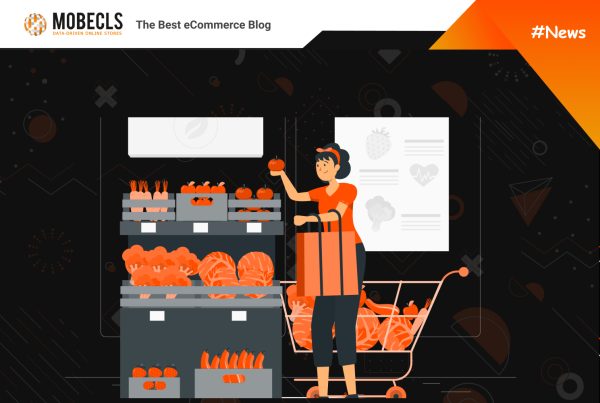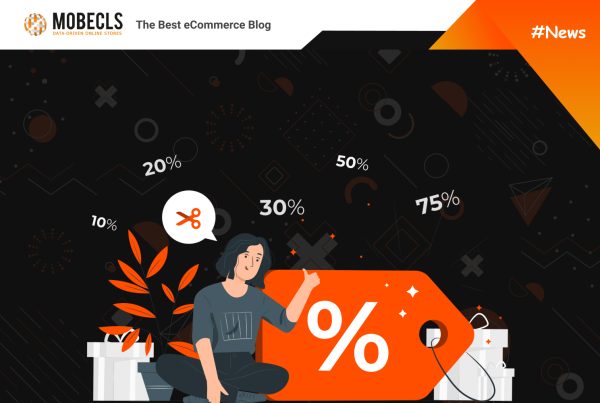To understand how to improve something, you must first measure it. What to track when starting an online store, how changes in certain indicators affect the profit and the state of the business as a whole?
It should be understood that the list of KPIs cannot be completely universal. It will differ depending on the type of business and the goals that the company faces.
And although there is a lot in common between different types of sites. The list of metrics when promoting an online store will differ from a similar list, for example, for a corporate site or a content project.
Measuring advertising effectiveness for online store
In this article, you will find a list of key performance indicators (KPI) that every online store owner should track. And a specialist who promotes client projects can use these metrics as a basis for reporting to the client.
You do not need to try to monitor everything at once. From the list below, you can first take only 3-4 metrics, and then, in the process, add new ones. This is especially true if you are doing this kind of work for the first time.
Traffic
Probably one of the most obvious KPIs that is important for a site of any type. Not always the level of sales grows with attendance, but without a growth in traffic, you won’t be able to raise sales too long.
For business, traffic is important not only in the context of sales but also in terms of brand awareness. The more people visit your site, the more they will know about your existence. And when in the future they or their friends will have a need for a product that you offer, most likely, they will remember your online store.
Analysis of site traffic using Google Analytics allows you to get answers to the questions where your visitors came from, whether there is a dependency in the amount of traffic on the days of the week, how much traffic has changed in the current month compared to the previous one, etc.
In addition to attendance, it is necessary to look at such indicators as:
- channel traffic distribution (organic search, social networks, etc.);
- number of new visitors;
- the ratio of new and returning visitors.
Conversion into purchases
Simple to calculate, but a very important indicator for assessing the effectiveness of the online store. It is expressed as a percentage, and it can be calculated by dividing the number of customers who made a purchase by the total number of site visitors:
It is easy to guess that by working on optimizing the conversion, you can significantly increase sales without infusing money into attracting additional traffic. This kind of measuring advertising effectiveness is very important in cases where the ceiling of attendance in the niche is reached, and profit growth can be achieved only by working on the site.
Visibility in search
Visitors will be transferred only on some but not all the keywords for which your site is shown in search engines. Some of them are simply in relatively low positions. But visibility in the search engines allows you to assess the dynamics and growth potential, and therefore, understand how much more you can increase traffic in the future.
Data on the visibility of the site in organic search are available in the panels of Google webmaster’s panel. It also displays data on the average position for these requests, and the CTR level (click-through rate) for each of them.
The increase in visibility in the current period compared to previous ones indicates that there is a return on work and you are moving in the right direction. With good visibility, it is enough to work on increasing positions in order to achieve a significant increase in traffic in the future.
Bounce rate
What good is it that you bring visitors to the site if they leave it right away?
In web analytics, the share of such traffic is expressed in the form of the “bounce rate” metric. This indicator of measuring advertising effectiveness shows the percentage of visitors who leave the site immediately after moving to any of its pages, without further interaction with it.
High bounce rate kills conversion. Therefore, if on a commercial site it is 80% or more (according to Google Analytics), this signals problems. This metric is one of the behavioral ranking factors that are considered by search engines.
The main reasons for the high bounce rate on the pages of an online store are a lack of information (an unfinished product card) or a lack of goods for sale.
Another possible factor is traffic quality. Suppose your online store sells textile bags for women from various types of fabric. You, on the other hand, concentrated all your efforts on promoting the demand for “bags”, which is quite general. Accordingly, people who go to the site can look for a variety of things – leather bags, men’s bags, travel bags, etc. As a result, the bounce rate will be high, since many of them will not find on your site that really looking for.
Shopping Cart Abandonment
This metric characterizes the percentage of visitors who added the product to the cart but did not complete the checkout and is expressed as a percentage. For example, if 500 users added a product to the cart, but only 150 of them completed the purchase, the percentage of abandoned baskets would be 70%
Unlike other indicators of measuring advertising effectiveness, the percentage of shopping cart abandonment depends on factors not related to SEO. For example, the main reasons may be the following:
- difficulties in the process of placing an order;
- high shipping costs;
- inappropriate payment methods;
- just an error from the user (for example, when entering a card number).
You can understand at what stage of the ordering process you lose customers using Google Analytics. This way, you can take appropriate action to eliminate the error before it starts affecting your business.
The cost of attracting a visitor/client
That shows how much you need to spend to attract one buyer or visitor. This helps to determine whether the overall advertising campaign is successful, as well as compare the effectiveness of individual Internet marketing channels. To calculate this indicator of measuring advertising effectiveness, simply divide the total budget spent during the campaign by the number of sales received as a result.
The owner of an online store can get the most accurate data and simplify this task for yourself by properly configuring conversion tracking in web analytics systems. Then, you can easily watch the indicators for each of the channels used.
Performance of channels and landing pages
In this case, this is not about any particular metric, it is just a recommendation that can greatly help you in your work. Track conversions, bounce rate and other indicators listed in this article, but not only in relation to the site as a whole, but analyzing the channels, campaigns, and landing pages separately.
Digital marketing measurement help you understand which traffic sources provide the most value to your business, which pages and content are most effective, and which need to be improved. Not always quantity is converted into quality, and not everything that looks beautiful brings benefits to a business.
UTM
For any Internet site, it is important to understand the level of conversion in the context of the sources used to attract traffic. As a rule, different sources of traffic are converted into targeted actions with different efficiency. How do you know which marketing channels really bring customers to the site? Marketing campaign effectiveness metrics and UTM tags will help answer this question.
UTM tags help you get detailed information about each traffic source. For example, determine which advertising campaigns are not effective and do not bring profit. That helps to quickly make changes on the site and redistribute the advertising budget.
To properly use UTM tags, you need to understand what UTM tags are and what they consist of.
UTM-tag is a variable that is added to the URL of the advertised page and allows the web analytics system to obtain additional information about the link source.
When to use UTM
UTM tags should be used when you post information with a link to your website on various resources, advertising sites/systems/social networks/e-mail/QR codes and plan to analyze all this. Most of the traffic from sites/advertising systems can somehow be identified without UTM. UTM-tag is needed if you want not only to identify this site, but also to obtain additional data for measuring advertising effectiveness. For example, you are not only interested in the fact that the user moved from Facebook, but you also want to clearly know what post/group he came from and what target actions he performed.
Final Words
The proposed list of e-commerce marketing effectiveness metrics is far exhaustive. Nevertheless, these metrics, in 90% of cases, will be quite enough for the effective development of an online store, understanding what stage the business is now at, what marketing channel gives the best return and where to go next.
For a specialist, using KPIs in reports allows to bring interaction with a client to a new level, and remove a lot of possible questions about whether his work is effective. The owner of an online store, in turn, gets a clear picture of how successful the promotion of his project is and how changes in certain indicators affect the business.




